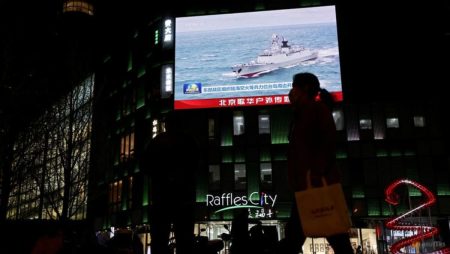Wabikong’s viral video, “Guess the Real Chinese (Malay Version),” serves as a compelling anecdote illustrating the growing prevalence of Mandarin fluency among non-Chinese Malaysians, particularly within the Malay community. The video’s premise, challenging a blindfolded guest to identify the sole Malaysian Chinese among a group of fluent Mandarin-speaking participants, highlights the remarkable linguistic and cultural proficiency achieved by these non-native speakers. The participants’ command of Mandarin slang and familiarity with Chinese eateries often misled the guest, leading to the erroneous elimination of the actual Malaysian Chinese participant. This playful yet revealing social experiment underscores a burgeoning trend in Malaysia: the increasing embrace of the Chinese language beyond its traditional ethnic boundaries. The video’s popularity, garnering over half a million views, speaks to the public’s fascination with this evolving linguistic landscape.
While precise data on non-Chinese Mandarin speakers remains elusive due to the absence of official collection, anecdotal evidence strongly supports the observation of a significant increase, particularly among Malays. The success of language centers like Fasih Mandarin, located in the Malay-majority city of Kuantan, Pahang, provides tangible evidence of this growing demand. The booming business experienced by such institutions reflects a tangible desire within the Malay community to acquire Mandarin proficiency. Furthermore, the adoption of Mandarin by prominent figures such as former Health Minister Khairy Jamaluddin and members of the Parti Islam Se-Malaysia (PAS) further reinforces this trend. Their public use of the language not only normalizes its presence within Malay society but also potentially encourages wider adoption among their constituents.
A valuable, albeit incomplete, indicator of this linguistic shift can be found in the enrollment statistics of Chinese vernacular primary schools, known as SJKCs (Sekolah Jenis Kebangsaan Cina). Over three decades, from 1989 to 2020, non-Chinese student enrollment in SJKCs witnessed a dramatic surge, increasing by an astounding 484 percent, from 17,309 to 101,011 students. This significant rise indicates a growing interest in Chinese language education among non-Chinese families, particularly Malays who now constitute approximately 15.3 percent of the total SJKC student population. This development represents a noteworthy shift in Malaysia’s educational landscape, with increasing numbers of Malay parents choosing Chinese-medium education for their children.
The increasing presence of Malay students in SJKCs carries significant implications for interethnic relations in Malaysia. Traditionally, educational settings have largely reflected the country’s ethnic divisions, with Malay students predominantly attending national schools where Malay is the primary medium of instruction, and Chinese students attending SJKCs. The rise in non-Chinese, and specifically Malay, enrollment in SJKCs represents a departure from this norm and signifies a growing trend towards more integrated learning environments. This increased interethnic contact at a young age offers promising prospects for fostering greater understanding and reducing prejudice between Malay and Chinese communities.
The impact of early intergroup contact on shaping attitudes and perceptions has been well-documented. Research consistently demonstrates that positive interactions between individuals from different ethnic backgrounds, especially during formative years, can significantly reduce prejudice and cultivate more positive intergroup attitudes. In the context of Malaysia, the increased intermingling of Malay and Chinese students in SJKCs creates valuable opportunities for cross-cultural understanding and the development of friendships that transcend traditional ethnic boundaries. These early interactions lay the foundation for more harmonious interethnic relations in the future, contributing to a more cohesive and inclusive society.
The evolving linguistic landscape in Malaysia, as evidenced by the growing number of non-Chinese, particularly Malays, embracing Mandarin, signifies a potentially transformative shift in interethnic dynamics. This trend, driven by various factors including economic opportunities, cultural exchange, and increased access to Chinese language education, is blurring traditional linguistic boundaries and creating more integrated social spaces. The rise in non-Chinese enrollment in SJKCs, while only one facet of this broader trend, provides a tangible example of this shift. The increased interethnic contact facilitated by these integrated learning environments holds significant promise for fostering greater understanding, reducing prejudice, and ultimately shaping a more harmonious and unified Malaysian society.










